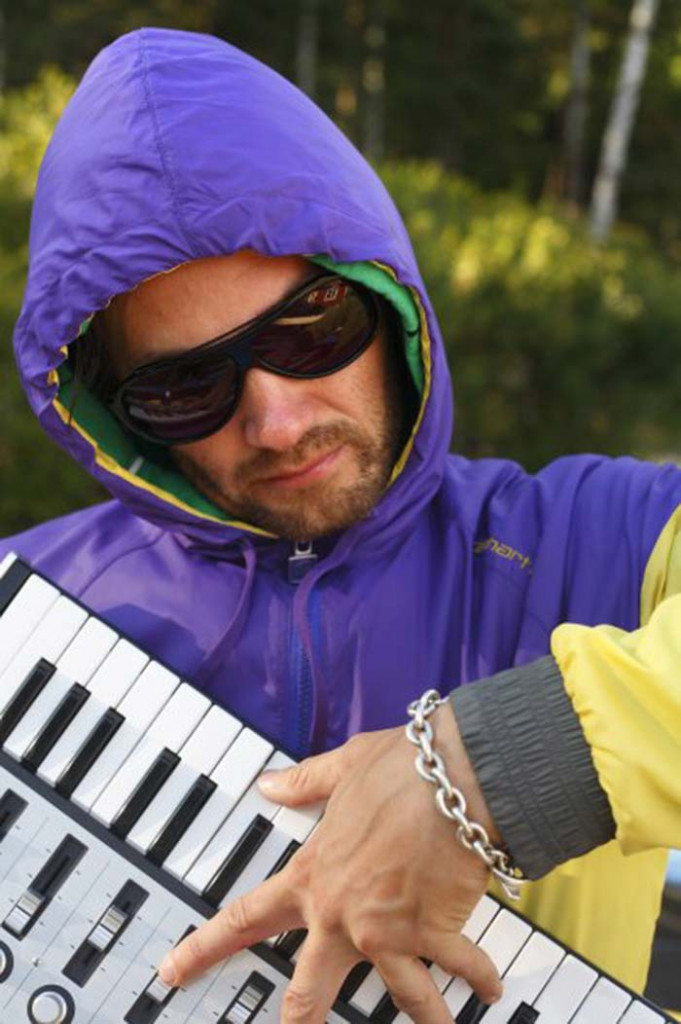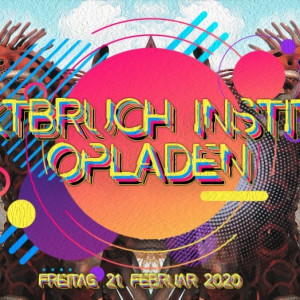Sebastian Ahrenberg aka Seba has been enriching the Drum&Bass music scene for more than twenty years now and he has made a significant contribution to the musical innovation, especially when it concerns playing and experimenting with atmospheres. His energetic and dreamy productions of unbelievably high quality have been making their way to the most renowned labels for a long time. From having multiple releases on LTJ Bukem’s ground-breaking label Good Looking Records to the legendary Metalheadz label, he can be found somewhere in almost all the catalogues of the renowned labels. In 2002 he founded his own label Secret Operations which is characterized by a conglomerate of timeless, breaky and atmospheric and somehow emotionally captivating Drum & Bass in its pure form. By combining all of these variations he has developed a very characteristic, unique style over the years.
But not only are his productions unique and extremely recognizable, as a DJ he also skillfully delivers those vibes to dancefloors all over the world. A clever mixture of his earlier, very bouncy productions, his collaborations with Paradox and his own, more amen-heavy, newer works result in a captivating mixture that I would love to hear from so many others.
For a long time, Seba has been friends with Paradox, and together they create the perfect mixture of raw breaks from Paradox and the pads from Seba. Recently their new EP has been released on Metalheadz. Once again, a true masterpiece. Check it out!
Seba talks about his production process and DnB in Sweden

Recently your new EP »Hexagon« has been released. How did your already long lasting connection to Paradox come about?
Seba: We met in 1997 when I played at Logical Progression at Ministry of Sound. He came up to me with Leke Aerosoul and told me he liked some of my music. I was in to his music too, so the friendship was instantaneous. Although we didn’t manage to get to the studio together until 2001.

How do you produce together and how do you produce (Soft-& Hardware) alone?
Seba: We use my setup, which is Steinberg Cubase. Dev (Paradox) brings a folder with some beats he’s been preparing and some sounds he likes to use. Even at his place, we use my laptop. I can’t get my had around how his ancient Commodore Amiga works.
Which VSTs do you prefer to use and what does your equipment look like and how compatible are Paradox’ hardware and drum computers with your way of working?
Seba: I use a lot of different plugins, but mostly Native Instruments. I just bought Arturia’s collection of vintage synth replicas. It suits me really well. I got 2 analog synthesizers in my studio, but apart from that, most of the music production is software based. The way Paradox works in comparison to how I work is miles apart. But I think he’s learning slowly how to use Cubase.

When and for what reasons did you found Secret Operations?
Seba: I had a track with Robert Manos (Pieces), that I thought was a bit special. I didn’t want to give it away and thought, that I should just put it out myself. I used the name of a drum and bass night I used to run from 1996–1997 in Stockholm.

What is the D&B scene like in Sweden, especially in Stockholm?
Seba: It goes up and down. Sometimes it seems to disappear, and then a crew driven by the love for d&b comes out of nowhere. At the moment there are a few nights going on. Back2back, Rekyl and Next chapter. Stockholm is a techno city and has been for the past 25 years. Drum & bass followers will always be a minority here.

Do you have a specific way of creating your amazing pads?
Seba: I do a lot of sound editing. I start from a preset and tweak it until I like how it sounds. Then I add effects.
How do you think the Jungle- or Amen break comeback has developed in the last years and how did it become more modern again?
Seba: I cant really answer this question. I’m still doing the same thing I’ve been doing for 25 years without following any trends. During that course of time Jungle/d&b went through many phases. I strongly believe that Rupture in London has a major role in bringing Jungle back in the spotlight.
How did you get to Drum & Bass and what made you start producing?
Seba: I started playing around with electronic music instruments when I was fifteen. I got into rave culture around seventeen maybe, and put my first record out as Peanut Planet in 1993.

Foto by Björk (2012) 
And which role did Bukem play in this?
Seba: I met Bukem at a festival in Sweden in 1994. I ended my set with a track that me and my friend Staffan (Lo-Tek) made. He really liked the track, and it later got signed to Good Looking Records as Sonic winds.
Which influences have had an effect on you? Genres and producers? What do you listen to besides Drum & Bass? I always find it very interesting when the artists I like either produce or play out other genres, as they usually have similar sound characteristics.
Seba: A lot of different music. I listen to a lot of Jazz, Techno and Ambient music. I like Skee Mask a lot. Om-Unit is another artist that I really enjoy listening to.
What is the best club night for you?
Seba: Clubs with about four to five hundred capacity, not too much light. Dark and gritty!

I don’t have to ask about festivals, because that is and will always be, I guess, Sun and Bass?
Seba: Sun&Bass is great! But there is also Hospitality on the beach that I’ve enjoyed playing at and Liquicity Summer Festival.
By the way, thanks a lot for the wonderful Good Looking Set in 2019! What do you do apart from your musical life?
Seba: I work in a school as an assistant for children with neuropsychological disabilities. Six hours per day. Rest of the day is studio-time!
What’s up for 2020?
Seba: Im doing some releases on both my labels Secret Operations and Seba&Paradox. Then I got some music in the pipeline for Metalheadz, Function records, Spearhead and hopefully some more.
Last but not least, as usual: Drum or Bass?
Seba: Drums!
Secret Operations Website • SoundCloud
Header-Image: by Björk








Keine Kommentare